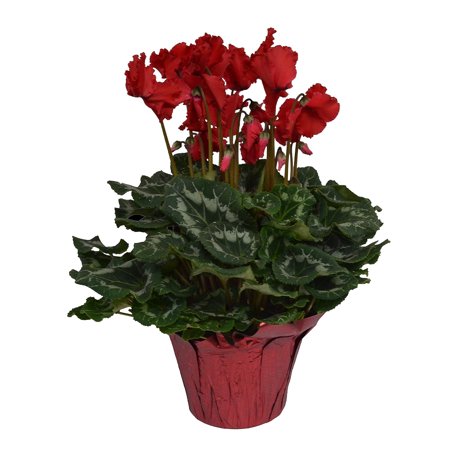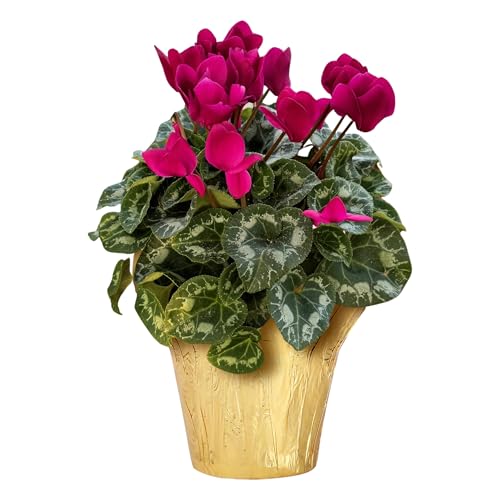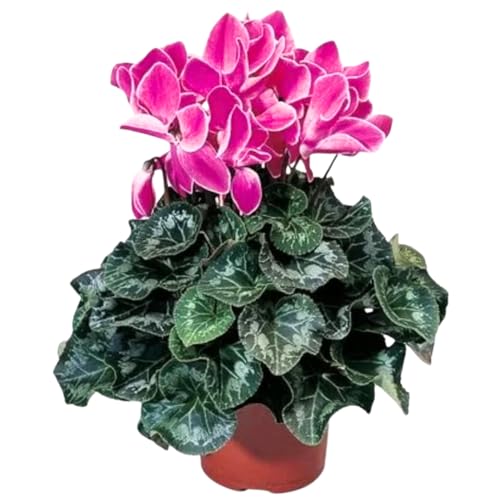How to Care for Cyclamen Indoors During Winter — The Bloom That Brings Cozy Cottage-Core Into the Home
You'll get plenty more beautiful blooms from your plants if you follow our expert guide care guide
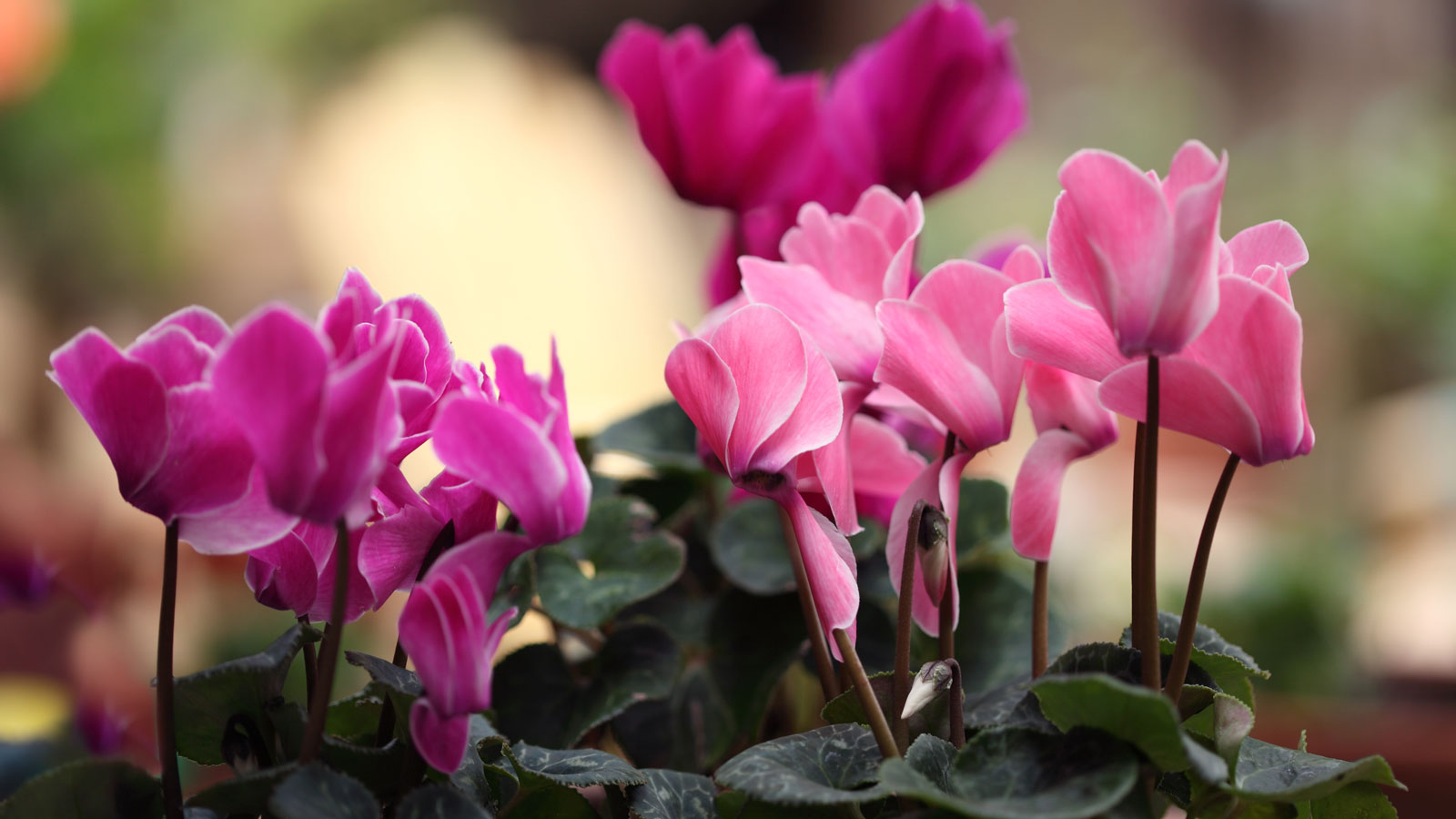
There is a great demand for indoor cyclamen plants right now, and the good news is that there is plenty to choose from at this time of year. They add a lovely touch to your winter interior. With their delicate butterfly-like blooms, they're one of the showiest flowering houseplants around, and their marbled foliage is pretty spectacular, too.
Like so many houseplants, the trick is to get cyclamen plants acclimatized to your home with a care routine they love and respond well to. If you give them a little more care and attention, they will give you so much more in return. This precious bloom also makes for the perfect indoor plant as a gift and will certainly make a loved one smile.
Although their blooms look tropical, this doesn't mean they like hothouse conditions. In fact, the hotter the room, the quicker the flowers will fade. Remember this, and you're halfway to cultivating cyclamen successfully. Here's everything else you need to know to care for these beauties and get the best out of your plant.
How to care for indoor cyclamen during winter
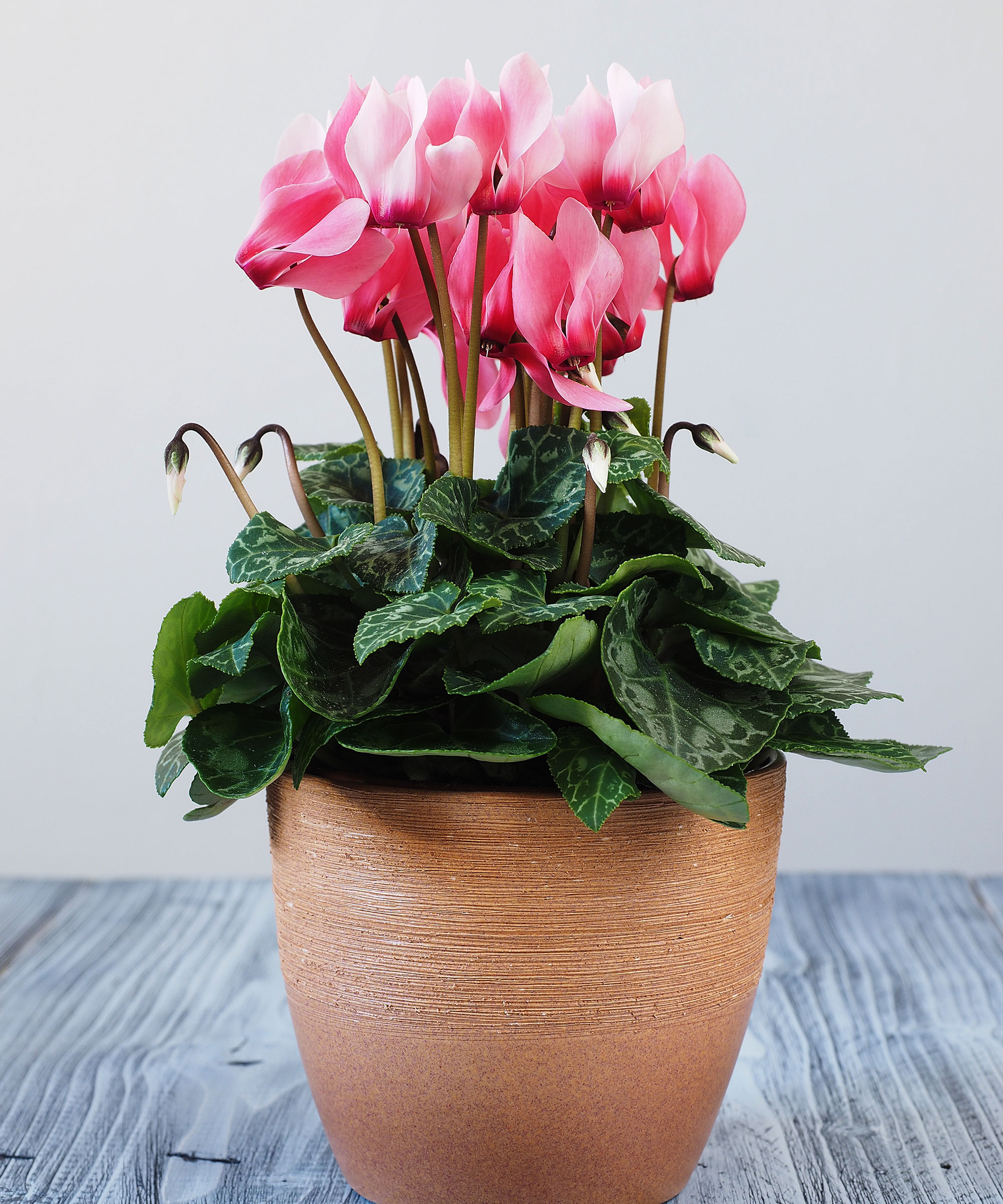
In conversation with leading horticulturalist and cyclamen expert Justin Hancock, he tells us that a lot of people consider these winter container blooms a short-term plant when grown indoors, meaning they toss it after it’s done blooming.
"While some plants are evergreens and keep their leaves while dormant, cyclamen isn’t one of those plants. This is because the plant naturally wants to go dormant in late spring or early summer. The leaves will start to turn yellow and fall off. It looks like the plant is dying, but instead it’s just entering its rest cycle."
This explains why occasionally we think our cyclamen plant has died when, in fact, it's just resting. Here are some other important factors to consider when finding out how to care for indoor cyclamen during winter.
Water: Watering houseplants correctly is essential and getting your cyclamen's watering needs right is crucial. "To keep your cyclamen happiest, water regularly, when the top inch or so of the potting mix dries to the touch," says Justin. "Your plant will start to wilt as it gets thirsty, but as is the case with a lot of flowering plants, it’s better to water just before it starts to wilt, rather than let it get stressed enough to wilt."
He points out that the corm can be sensitive to sitting water, so cyclamen is a good candidate for bottom watering (where you let moisture get absorbed from the drainage holes at the bottom of the pot by letting it sit in a dish of water for 10 to 15 minutes or so). "If you’re not a fan of bottom watering, though, you can water the traditional way instead. Just try to keep your water off the center of the plant. In most areas, regular tap water is just fine for cyclamen. You don’t need to use distilled water unless you have poor water quality."
Soil: If you are planning on keeping the plant for more than six weeks, typically the amount of time a cyclamen flowers for, the best type of soil to use is a loam-based compost with added horticultural grit to create the well-draining environment your plant will love. We recommend this Back to the Roots 100% Organic Potting Mix from Amazon, priced at $16.99.

Light: It's important to get the lighting right. "Bright light is best," says Justin, "so within 3 feet or so of a good-sized, unobstructed east- or west-facing window. If you live in the North, direct sun through a south-facing window should be okay. If you’re in a Southern state, watch your plant to see if a lot of direct afternoon sun through a window causes sunburn." Check out more small windowsill plants while you're here
Temperature: Cyclamen need to be in a cool area to thrive. If the temperature in a room is too high in midwinter, the plants get too soft, and the leaves and flowers tend to flop. "The temperature should be around 50º-59ºF," says Justin. "If the room is too warm, the leaves can also turn yellow, the flowers will fade, and the plant will go into dormancy, which is what it does in the warmer summer months."
Fertilizer: It’s helpful but not necessary to periodically fertilize your cyclamen while it’s growing. "You can use any general-purpose fertilizer as long as it’s labeled for use on houseplants," says Justin. 'Happily, cyclamen aren't fussy about where nutrients come from. Personally, I like the ease and convenience of time-release fertilizers. These are often in the form of pellets you sprinkle in the soil, that slowly release nutrients to the plant over the course of weeks. So you may only need to use it once or twice a year." If you prefer to "fertigate" (mix your fertilizer in your irrigation water), you can do that, too. Just be sure to follow the directions on the product packaging.
For a general all-purpose fertilizer, we recommend Jack's Classic 20-20-20 All Purpose Water-Soluble Fertilizer from Amazon.

Justin has 25+ years in the industry, and is now based at Costa Farms. A plant enthusiast and educator, he has a degree in horticultural science and has worked in garden centers and botanical gardens, as a garden designer, and in garden publishing (including at Better Homes and Gardens). He has experience gardening across the country, from Minnesota to Oregon to Miami. Hancock is also co-host of the Costa Farms podcast Plant Rx.
How to grow indoor cyclamen
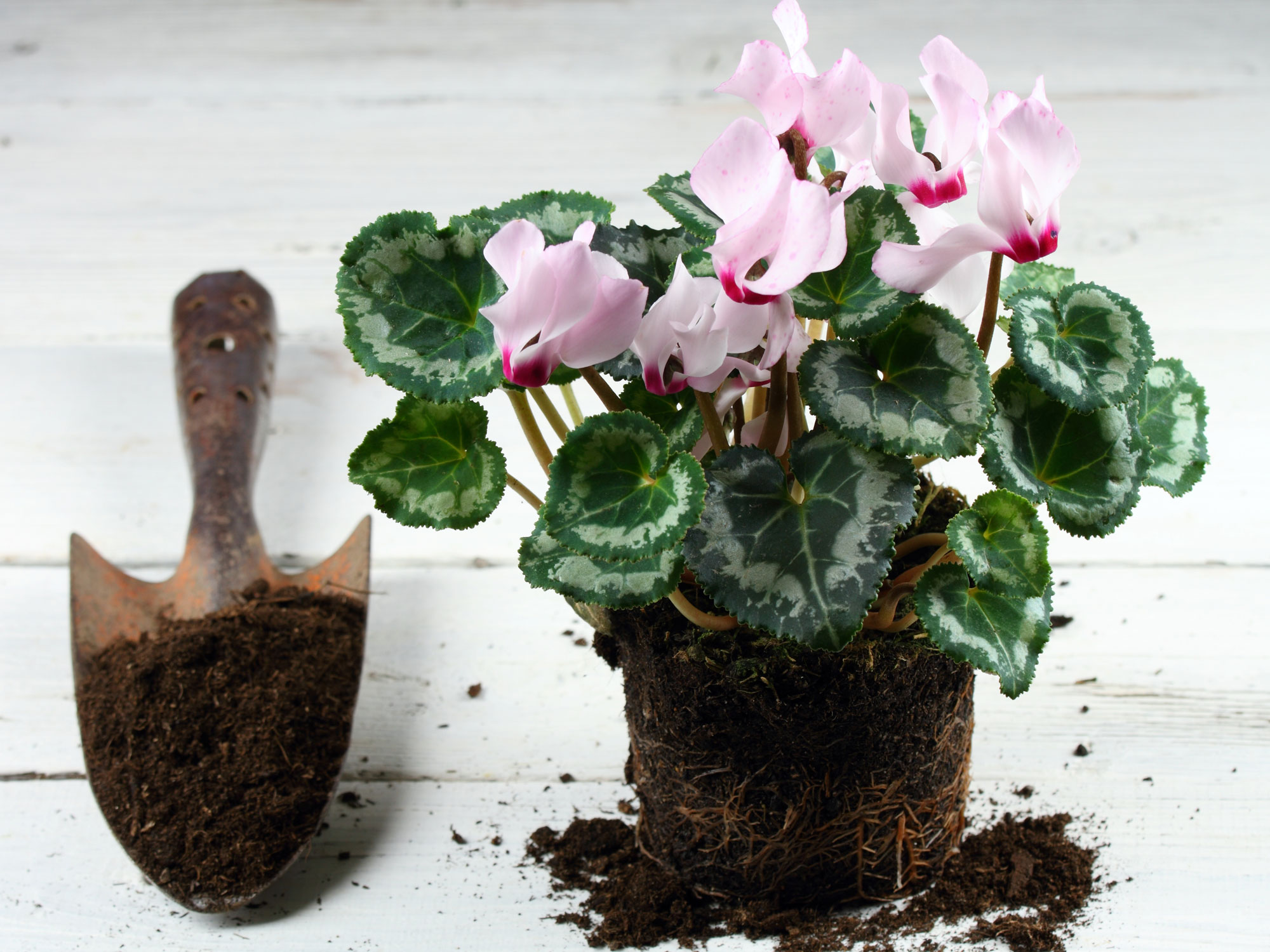
If you're interested in finding out the top tips on how to grow these indoor winter plants, here is a step-by-step guide to growing them from the second cyclamen expert we spoke to, horticulturalist and nursery owner Tammy Sons.
Step 1 - Choose a pot: Select a well-draining pot with drainage holes to avoid root rot.
Step 2 - Potting mix: Use a loam-based compost with added horticultural grit to ensure a free-draining mix. Ensure the top of the cyclamen corm sits just above the soil surface.
Step 3 - Light placement: A bright room is ideal, but your plant shouldn't be exposed to direct sunlight.
Step 4 - Watering: Water only when the soil feels dry. Avoid using a watering can, as this can splash the leaves. Once a week is best, when the soil begins to dry out. Allow any excess water to fully drain away.
Step 5 – Feeding: Cyclamen don't need much feeding, or they will produce lots of foliage rather than flowers. Feed every couple of months with a house plant fertiliser if you're planning on keeping your plant from year to year. If not you don't need to bother.
Tammy's favorite cyclamen? "I'm a fan of Cyclamen persicum 'Verano Red', which adds a splash of crimson during the holidays. Cyclamen persicum 'Blanc Pur' is also stunning for those preferring a white-themed holiday decoration."

Tammy is the founder/CEO of TN Nursery in Tennessee. She is a plant expert who studied horticulture at Texas Southern University. She also has certifications at Harvard University on Entrepreneur Essentials.
How to make your plant bloom successfully

When you're decorating with plants for the holiday season or to bring color and interest into your home, you'll want as many blooms on display as possible. Given the right care, your beautiful houseplant should flower for at least six weeks. If you're choosing a cyclamen to buy, look for one with plenty of buds. If the plant doesn't flower well, this means the room is too warm, so find a cooler spot for it.
According to Justin, here are some more easy points to take into account that will help boost cyclamen flower production.
Light: The single best thing you can do to encourage good flower power is to grow your cyclamen in plenty of light. The more light it gets, the more energy it will have to produce blooms.
Temperature: In addition to light, cool temperatures help. Nighttime temperatures below about 65ºF encourage best flowering, while night temperatures over about 70ºF or so may decrease the number of flowers.
Humidity: Above-average relative humidity levels can also help encourage the plant to put out more flowers, as can fertilizing once it starts to leaf out.
Deadheading: If you have a cyclamen that’s already blooming, deadheading (removing the faded flowers) can encourage a longer bloom season.
Justin's favorite cyclamen? "While most people seem most attracted to the butterfly-like flowers that seem to float over the foliage, it’s the silver-variegated leaves on most varieties that I find most fetching."
A well-grown cyclamen will produce a symmetrical mound of heart-shaped, silver-patterned leaves topped by flowers in shades of red, pink, purple, and white. "You might also find bicolors," adds Justin. "To me, one of the most eye-catching varieties are those that have white flowers edged in purple. Some cyclamen varieties have ruffled petal edges, adding an extra level of appeal. And some are also decidedly fragrant, so they’re both attractive to the eyes and the nose."
FAQs
What are the common problems with Cyclamen During Winter?
According to Tammy, some of the common problems of cyclamen during winter typically revolve around watering too much, positioning in direct sun, or exposure to high temperatures. Here are Tammy's top tips on how to combat common problems that affect cyclamen.
Yellow leaves: Cyclamen must be in a cool room and out of bright sunshine to thrive. Also, your plant only needs to be watered when the soil begins to dry out, about once a week but this can depend on how dry the indoor environment is.
Crown rot: If the plant is brown and mushy in the center, it could have crown rot. When watering avoid letting water rest in the crown of the plant where the base of the stems will be.
Gray mold: If you see fuzzy gray patches this could mean your plant has gray mold (Botrytris cinerea). This means the environment is too humid. Remove dead leaves and flowers promptly and don't allow them to sit on the soil surface. Avoiding splashing the leaves when watering can also help prevent mold, as can improving air circulation.
What happens when my cyclamen finishes flowering?
When your cyclamen finishes flowering don't be tempted to discard it. When the leaves start to wilt and turn yellow, it's time to get your plant into dormant mode so it can stock up on its energy levels to prepare for reblooming. Think of it as a holiday for your plant.
First cut trim away any dead and dying foliage, after gradually cutting back on watering, then stopping completely for the duration of the dormancy period. Put the container in a cool, shady room, away from bright or direct light.
"Keep your plant on the dry side all summer and through early fall, then when temperatures drop in winter, you can slowly start watering it again." As soon as you see new growth, usually in the fall, move the cyclamen into bright sunlight and water the plant thoroughly. "It should soon begin to leaf out," says Justin Hancock. "Then you can start fertilizing it again at this point if you wish."
Now you know how to care for indoor cyclamen, find out how to prepare your houseplants in winter so you can give the rest of them equally good care to see them through the cold season.
Be The First To Know
The Livingetc newsletters are your inside source for what’s shaping interiors now - and what’s next. Discover trend forecasts, smart style ideas, and curated shopping inspiration that brings design to life. Subscribe today and stay ahead of the curve.
Lifestyle journalist Sarah Wilson writes about flowers, plants, garden design and trends. She has studied introductory garden and landscape design and floristry, and also has an RHS Level 2 qualification in the Principles of Plant Growth and Development. In addition to homesandgardens.com and livingetc.com she's written for gardeningetc.com, Real Homes, Modern Gardens and Country Homes & Interiors magazines. Her first job was at Elle magazine, during which time a trip to the beautiful La Colombe d'Or in St-Paul-de-Vence led to an interest in writing about all things botanical. Later as lifestyle editor at Country Homes & Interiors magazine the real pull was the run of captivating country gardens that were featured.
-
 The 'New British' Style? This Victorian London Home Embraces Its Owners' Global Background
The 'New British' Style? This Victorian London Home Embraces Its Owners' Global BackgroundWarm timber details, confident color pops, and an uninterrupted connection to the garden are the hallmarks of this relaxed yet design-forward family home
By Emma J Page
-
 Muji Living Room Ideas — 5 Ways to Harness The Calming Qualities of This Japanese Design Style
Muji Living Room Ideas — 5 Ways to Harness The Calming Qualities of This Japanese Design StyleInspired by Japanese "zen" principles, Muji living rooms are all about cultivating a calming, tranquil space that nourishes the soul
By Lilith Hudson
-
 8 Tranquil Water Garden Ideas That Look Beautiful and Train Your Ear Away From Noisy Outdoor Distractions
8 Tranquil Water Garden Ideas That Look Beautiful and Train Your Ear Away From Noisy Outdoor DistractionsIf you enjoy spending time outdoors and are looking for ways to elevate your backyard's ambiance, here are 88 water garden ideas that are sure to inspire.
By Amiya Baratan
-
 Balcony Storage Ideas — 6 Concepts to Transform Your Deck into an Organized Outdoor Space
Balcony Storage Ideas — 6 Concepts to Transform Your Deck into an Organized Outdoor SpaceIf you have a balcony holding outdoor gear and miscellaneous items, these expert tips will make sure your belongings are organized with nifty storage solutions.
By Amiya Baratan
-
 5 Things That Are Disrupting Your Garden's Feng Shui That You Might Not Know About
5 Things That Are Disrupting Your Garden's Feng Shui That You Might Not Know AboutIf you're interested in getting your garden Feng Shui ready for spring, adopt these expert dos now. Also, remember to avoid the don'ts for a harmonious space.
By Amiya Baratan
-
 How to Bring Privacy to Your Apartment Balcony — Because Nosy Neighbors Are the Worst
How to Bring Privacy to Your Apartment Balcony — Because Nosy Neighbors Are the WorstCreate your own safe haven in the sky with our experts best tricks for secluded apartment balconies
By Maya Glantz
-
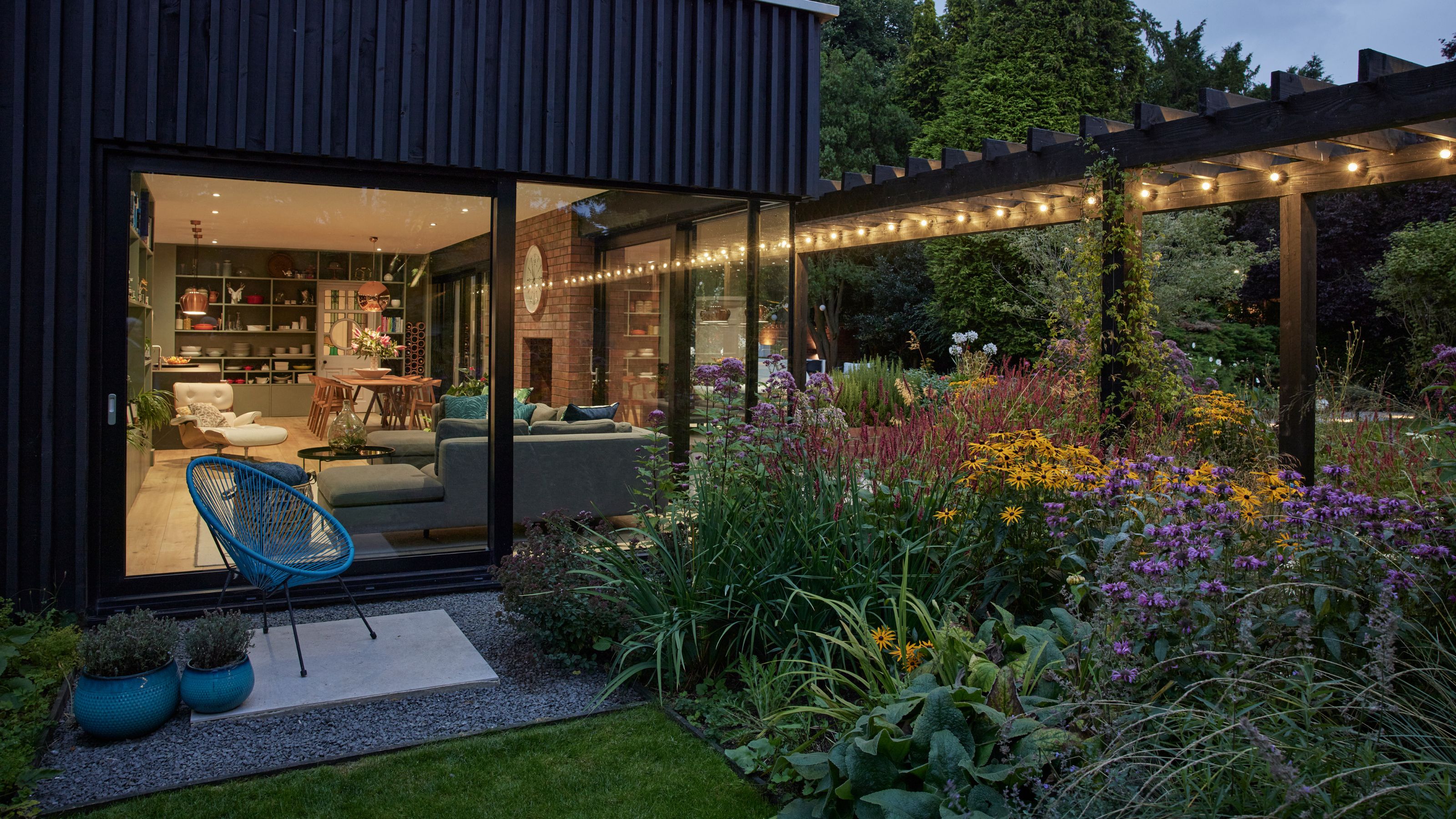 When Should I Start Planting for Spring? How to Time It Right for Your Garden to Burst Into Life
When Should I Start Planting for Spring? How to Time It Right for Your Garden to Burst Into LifeStart sowing seeds indoors now if you want to get ahead start...
By Jacky Parker
-
 How to Clean Outdoor Limestone Paving — To Get It Look Back to Its Best Ahead of Spring
How to Clean Outdoor Limestone Paving — To Get It Look Back to Its Best Ahead of SpringProtect your outdoor limestone by incorporating these simple cleaning tips
By Seraphina Kyprios
-
 How to Clean Metal Garden Furniture — And Prepare Your Space for Al Fresco Dining
How to Clean Metal Garden Furniture — And Prepare Your Space for Al Fresco DiningAn expert guide to freshen up your furniture for the seasons ahead and get ready for those lavished outdoor dinner parties
By Jacky Parker
-
 How to Clean Outdoor Cushions — And Get Them Looking Fresh Again for Sunnier Days
How to Clean Outdoor Cushions — And Get Them Looking Fresh Again for Sunnier DaysA professional guide to preparing your outdoor living space with effortlessly clean soft furnishings
By Becca Cullum-Green
